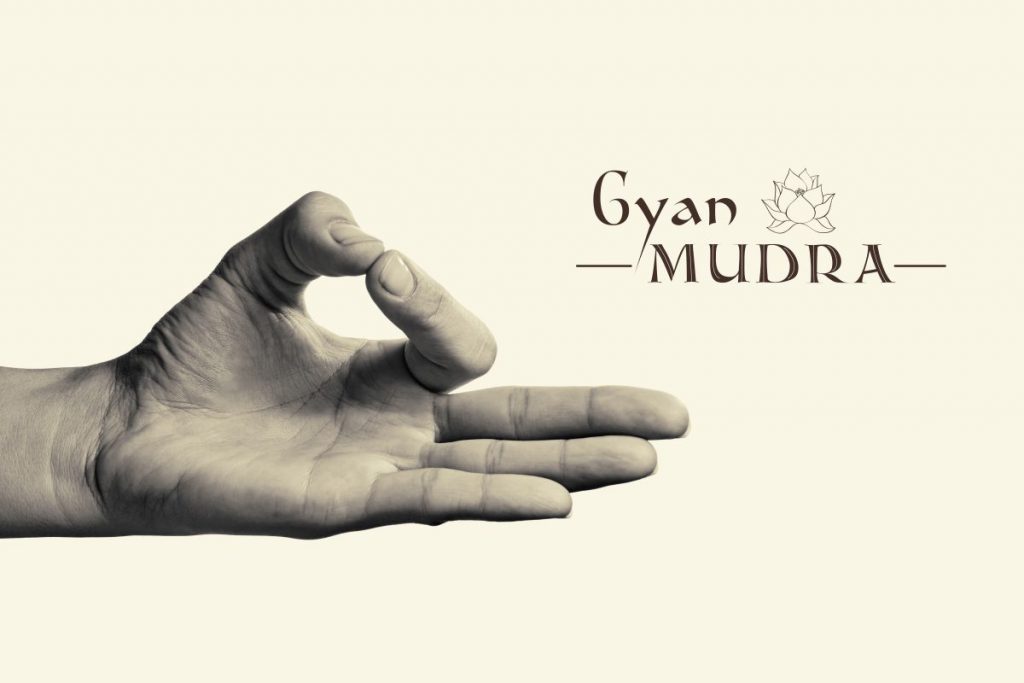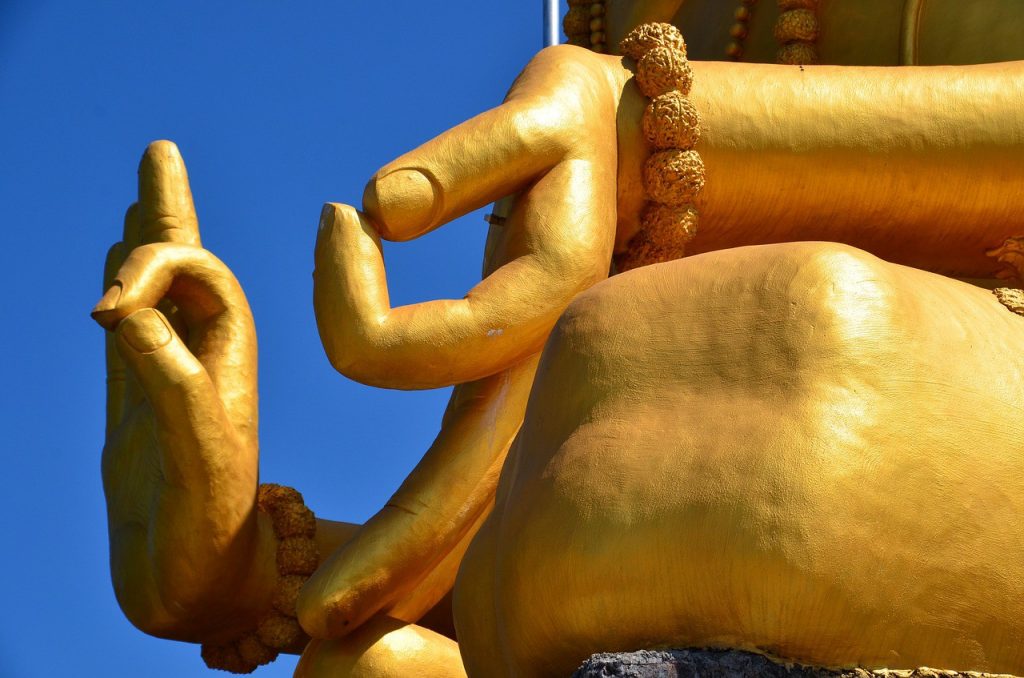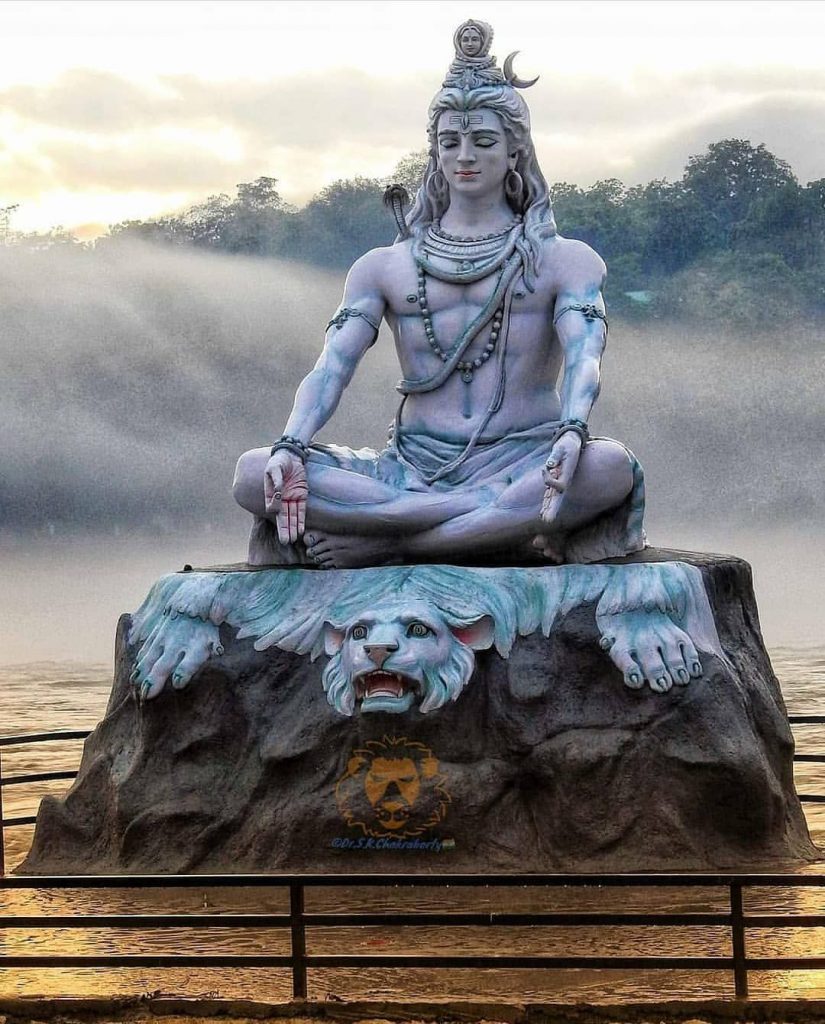Exercise 15
Jñāna Mudra and Chin Mudra
Difficulty level – 1 (easy)
Time commitment : 5 minutes everyday

Today, we will practice our second mudra – the jñāna Mudra. I have made a lot of references to this mudra in my earlier articles, and a lot of you requested for a more detailed look into the mudra. While mudras are of many types, I will restrict this discussion to hasta (hand) mudras.
A few points to note:
- Practice these mudras during meditation and mantra japa.
- Exercise vs. Subtle energy – Mudras can be very beneficial for the physicality of the hands. You can approach mudra practice as an exercise, in which case, you can extend the fingers vigorously and activate your muscular strength when performing the mudras. For more subtle energy effects, soften the hands.
- Gentleness – While this mudra is easy to perform, you can experience some soreness if they are held for a long time. Ensure that you complete the warm-up routine, and also hold the mudra gently.
- As with most yogic practices, mudras should be practiced on an empty stomach. Wait at least 2-3 hours after a light meal.
How you do it
Physical
Warm up
Take a deep inhalation, and hold your breath. Clap your hands till you feel the sting a little.
Exhale, and breathe normally. Now rub your hands vigorously, for one minute. Make sure to rub all parts of your hand – the fingers, the palms, back of the hands, and in between your fingers as well. Very similar to our newly-found expertise on washing hands.
Once your hands feel warm, they are ready for mudra practice.
Seating
Sit in a comfortable position. Ideally in Sukhasana or Vajrasana. Avoid sitting on a chair. Keep your back straight. If you find this difficult, try the Vajrasana posture since the back is naturally straight in this āsana. Breathe normally.
Jñāna Mudra and Chin Mudra

Keep your torso straight and upright, and draw your shoulder blades down into the back.
Fold your index fingers so that they touch the base of the thumbs. Don’t exert pressure when performing this action, instead, let the fingers touch lightly.
Extend the other three fingers of each hand is that they are relaxed, and slightly apart.
Place the hands on the knees with the palms facing down, for jñāna mudra, and palms facing up, for chin mudra.
Relax the hands and arms.
Close your eyes and focus on the energy that you feel in your fingers, at the place of joining the index finger to the base of the thumbs. Breathe normally.
Recognise the sensations and subtle vibrations that you feel. You may sense a warm, tingling feeling in the tip of your index finger.
Hold the position for 20 breaths.
Slowly detach your index finger from the base of your palm and separate the fingers. Distance your fingers slowly, and feel the energy bonds between them as they separate. Let your hands relax at the sides of your body, or on your thighs.
This is one round. Practice 5-10 rounds.
If doing this mudra during meditation, mantra japa or āsanā practice, then hold as long as required.
Variation
Beginners find the above variation of both mudras beneficial for prolonged periods of meditation, since the thumb and index fingers tend to separate when the mind starts drifting. More advanced sādhakās can perform these mudras with the tips of the angushta (thumb) and tarjani ( fingers) touching (without excess pressure) each other to form a circle.
Breathing
Gentle breathing, without strain or effort. Take in deep slow inhalations, with an expanded chest, and deep slow exhalations, with your stomach moving towards your spine. Your breathing should not be noisy – rather, should feel like the gentle waves of a calm ocean.
Awareness
Maintain awareness on your index finger and thumb, and the energies that flow between them.
Notice the sensations and subtle vibrations when you bring these fingers together, then at the point of contact – feel their energies interact. You may feel a warm tingling sensation at the place of joining – be aware of this sensation, and notice if it changes during the practice. When releasing the mudra, feel the energy bonds between the fingers as they separate. Notice if this changes during the course of the practice.

The key to mudra practice is to be aware of every part of your hand, and to recognise the energies that change as you go through the mudra.
Benefits
Swami Satyananda Saraswati details the benefits of these two mudras, as below:
The jñāna mudra and chin mudra are important psycho-neural finger locks that make meditation more powerful. The fingers have many nerve root endings that constantly emit energy. When the tarjani joins the angushta, a closed circuit is produced, which allows the energy that would normally be lost, to travel back through the body and up to the brain.
When the fingers and hands are placed on the knees, the knees are sensitised, creating another panic circuit that maintains and redirects Prana within the body. In addition, placing the hands on the knees stimulates a nadi which runs from the knees, up the inside of the thighs, and into the perineum. This nadi is known as the gupta, or hidden nadi. Sensitising this channel helps to stimulate the mooladhara chakra.
When the palms face upward in chin mudra, the chest area is opened up, and this leads to a sense of lightness and receptivity.
The Bihar School of Yoga elaborates on the spiritual aspects of the jñāna and chin mudras. Jñāna means wisdom or knowledge, and jñāna mudra is a gesture of intuitive knowledge. Chin, is derived from chitta, or consciousness. Chin mudra, therefore, is a psychic gesture of consciousness.
Symbolically, the little finger, the ring finger and the middle finger represent the three gunas, or qualities of nature – tamas, or stability, rajas, or activity and creativity, and sattwa, or harmony. These three states must be transcended, in order to pass from ignorance to knowledge – तमसो मा ज्योतिर्गमय – tamaso ma jyotirgamnaya – says the Pavamana Mantra. Take me from darkness of ignorance to the light of knowledge.
The thumb is also said to represent universal consciousness, and the ring finger individual consciousness, and hence joining both brings about a merging of the Self into the Universal Consciousness.
Everyone has their distinct experience when practicing mudras, something that is indescribable and cannot be generalised. Approach this practice with reverence, going beyond the physical, and into the realm of the known – but largely forgotten – our own Self.
ॐ असतो मा सद्गमय ।
तमसो मा ज्योतिर्गमय ।
मृत्योर् मामृतं गमय ।
ॐ शान्तिः शान्तिः शान्तिः ॥
asato mā sadgamaya,tamaso mā jyotirgamaya,mṛtyor mā’mṛtaṃ gamaya
Bṛhadāraṇyaka Upaniṣad 1.3.28
From falsehood lead me to truth,From darkness lead me to the light,From death lead me to immortality.
